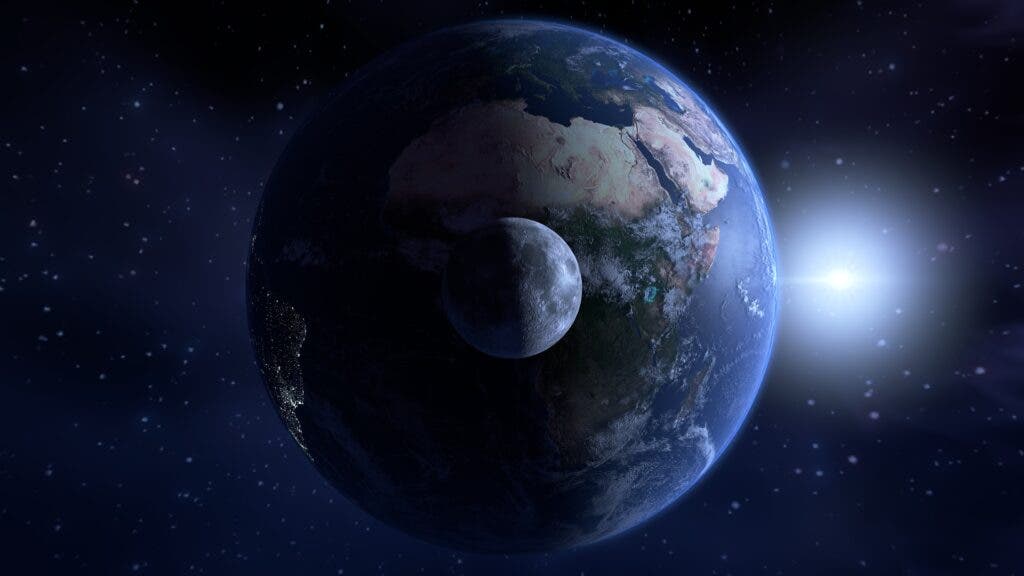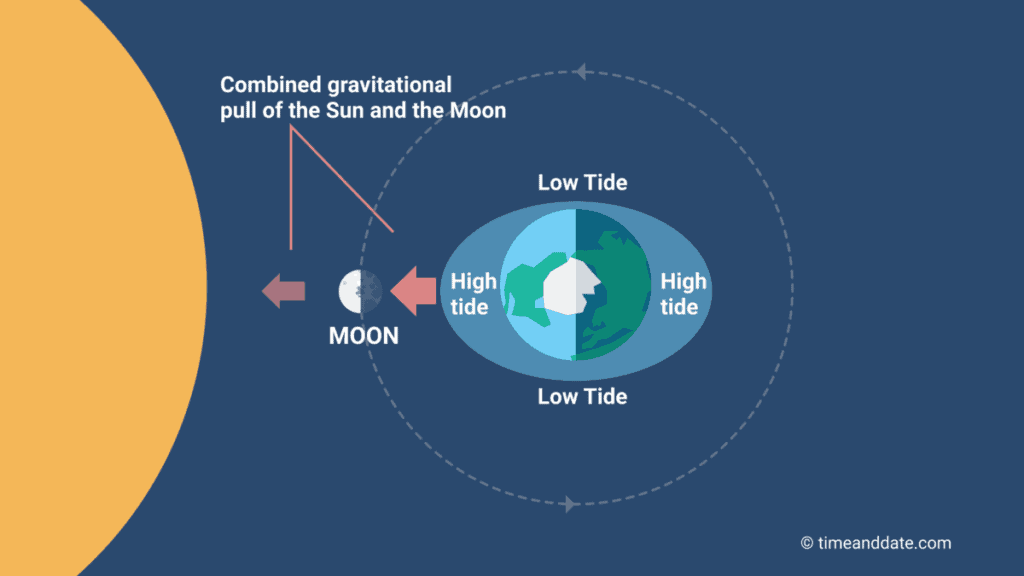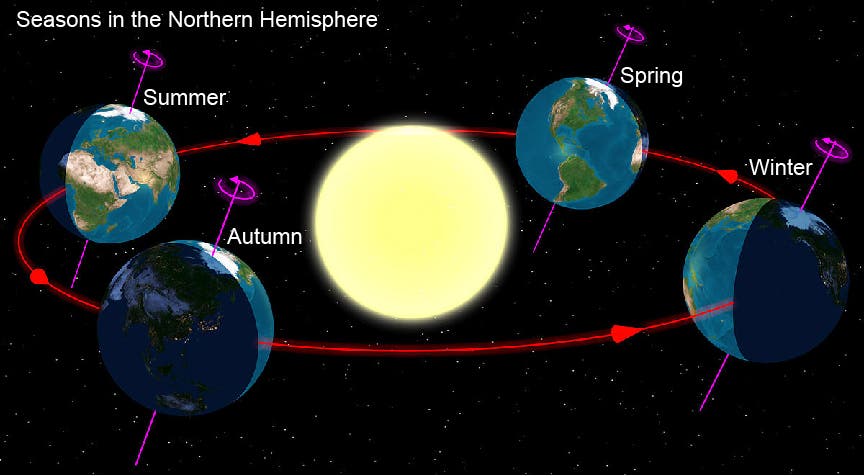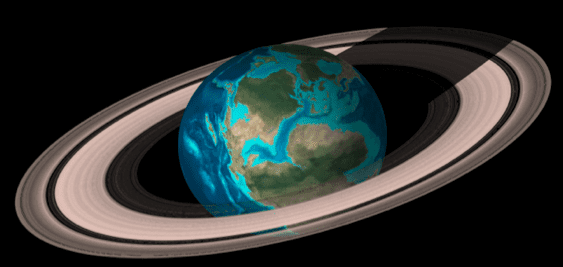
Earth and the moon have been best buddies since they formed. Both can trace their origin to collision with an immense object that struck proto-Earth billions of years ago during a time when the solar system was a chaotic mess. Like the biblical genesis of Adam and Eve, the moon was born from a chunk of our early planet, and ever since then, the two have been inseparable. But all of this leads to an interesting thought experiment: What would happen if the moon suddenly disappeared overnight?
Besides making our nights a lot duller and darker, losing the moon would trigger likely catastrophic disruptions to Earth’s climate and our wildlife — and that’s to name a few.
The tides would be much lower, affecting entire coastal ecosystems, as well as the global climate

It’s common knowledge that the moon’s gravitational pull has a tremendous impact on the tides. The tidal force exerted by the moon causes Earth, and particularly its water, to bulge out on the side closest to the moon and the side farthest from the moon. The bulges of water are the high tides, whereas water outside the two bulges experiences a low tide.
Without the moon, tides would be much weaker — between 50% and 75% lower than they are today, leaving only the sun’s gravity to do all the heavy lifting. While tides would still be present without the moon, they’d be much weaker, resulting in a much slower circulation of material around the world’s coasts. Animals like crabs, mussels, starfish, and snails rely heavily on tides for their survival. For instance, twice a month from March through August, thousands of silvery grunions lunge onto the shore to mate. This mating ritual is perfectly timed with the tides — and so are the hatchlings, some 10 days later. According to biologists, the emergence of these larvae every two weeks coincides with the peak high tide — which occurs twice a month when the moon and the sun are perfectly aligned and combine their gravitational tug against Earth.
Furthermore, tidal movements play an important role in Earth’s climate, since they drive current, which in turn distributes warm water around the globe. Without tides, regional temperatures could be more extreme, both cold and warm, and freak weather like hurricanes would be much more common.
The climate is a complex system with many interdependent parts, so predicting what would happen without an important factor like tides is challenging — but it sure wouldn’t be pretty.
It’d be much darker during the night, and many nocturnal animals would be in trouble

It’s not just coastal ecosystems that would have much to suffer due to this severed union. The moon reflects only between 3% and 12% of the sunlight that hits it, but that’s enough to make things at least partially visible during the night. Without the moon, it would be darker than during a new moon and many nocturnal animals like owls and lions would be terribly confused — some would go extinct pretty fast, being unable to acquire food. There’d be some winners too, though. Rodents, for instance, tend to cower more when the moonlight is near its peak, so they’d be well suited to a moonless world.
Many other animals, regardless of whether they’re nocturnal or not, rely on lunar cues to reproduce. These include changes in light intensity, geomagnetism, and gravity. For instance, each November, coral colonies in the Great Barrier Reef go through a great spawning, releasing millions of egg and sperm sacs within just minutes of one another. This remarkable event is synchronized with the full moon, and some scientists seem certain that the moon’s light plays a crucial role, although the exact mechanism has yet to be uncovered.
“Light is possibly — maybe just after the availability of . . . food — the most important environmental driver of changes in behavior and physiology,” Davide Dominoni, an ecologist at the University of Glasgow in Scotland, told Science News for Students.
The seasons would change drastically across the world

Over billions of years, the moon has had an immense influence on Earth, and consequently life. For instance, early on in its history, Earth completed a rotation around its axis every four hours, but this gradually slowed to 24 hours as the moon drained energy from Earth’s spinning momentum.
Earth rotates around an axis that is tilted at 23.5º, and this is why we have the seasons (and not because of Earth’s orbit around the sun). During summer, the Northern Hemisphere is tilted towards the sun so we get longer days and warmer weather. However, in winter, the Northern Hemisphere is tilted away from the sun giving us shorter days and cooler weather.
This tilt is held steady by the moon, and without it, the seasons would be completely out of whack as the planet’s axis would wobble anywhere from 10º to 45º. This wouldn’t happen instantly if the moon vanished since Earth has huge momentum, but it would gradually happen and perhaps fast enough not to give life enough time to adapt. Consider that some ice ages were triggered when the tilt changed by just one or two degrees.
Could we ever lose the moon?
All of these hypothetical scenarios are just running a thought experiment, but is a moonless future actually a possibility?
When the moon coalesced from the debris left over from proto-Earth’s collision with a Mars-sized body, it sat much closer to Earth than it does today. Early on, the moon may have orbited the planet at a mere 22,500km (14,000 miles) away, compared to the 402,336 km (250,000 miles) seen today. Billions of years ago, looking up into the night’s sky, you would have seen a gigantic moon appearing up to 20 times larger than it does now.
The reason why the moon has been slowly inching away from Earth — and continues to do so at a rate of about 3.78 cm (1.5 inches) per year — has to do with Earth’s tides. Due to the rotation of the planet, the tidal bulge sits slightly ahead of the moon, feeding a small amount of energy to the moon, thereby pushing it into a higher orbit. So, as a result of the tidal interactions between the Earth and the moon, Earth’s rotation is slowed down and the moon expands its orbit — both effects balance out to conserve angular momentum.
In time, Earth’s days will grow longer (days get longer by a second every 50,000 years) and the moon will keep drifting away — but this won’t go on forever. By one estimate from the Planetary Science Institute, at some point in the future, 50 billion years from now, the moon’s orbit is supposed to reach its maximum reach. At that time, the moon will take 47 days to complete a lunar orbit, and Earth’s rotation period will also be 47 days (a 47-day day if that makes sense), so one side of the Earth is always facing the moon, just like now one side of the moon is always facing the Earth. The whole system will be in sync, meaning Earth and the moon will exert no more tidal effects on each other.
However, the tidal effects owed to the sun’s gravity will persist, reversing the effect and now pulling the moon steadily closer to Earth. After another 50 billion years or so, the moon will be so close to Earth that it will be torn to shreds by the planet’s gravity, forming a ring of debris like we now see on Jupiter.

But since the sun is supposed to run out of fuel in five billion years, at which time it will swell into a red giant enveloping both the Earth and the moon, this scenario is not plausible. So, luckily, we will never lose the moon. No need to worry; the sun will destroy both Earth and its lunar companion before that ever happens.
[no_toc]


